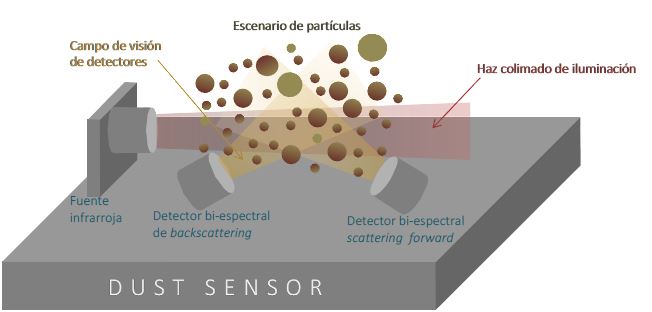To explore and get to know Mars is one of the great scientific challenges of our time. ExoMars’18 Mission aims to contribute to it providing knowledge of the Martian surface.
The European Space Agency (ESA) and the Space Research Institute of Russian Academy of Sciences (IKI), have promoted this mission. LIR-Infrared LAB has responded to the challenged proposing a new development of its Dust Sensor (DS’18), integrated in the Spanish consortium conformed by INTA, UC3M, CAB, CSIC and UPV.
Mars atmospheric dust is ubiquitous, both in suspension as dragged through the air. It is the main heat exchanger with the surface of the planet and the main responsible of atmospheric phenomena. It is also key to the safety of people and equipment in future manned missions. However, the airborne dust on the surface remains largely unknown, hence its great scientific interest. The Dust Sensor presented to ExoMars’18 call aims to improve the scientific understanding of airborne dust and its cycles.

Figure: Proposed principle of operation for ExoMars’18
back and forward scattering and at least two IR bands
In addition to its scientific goals, the DS’18 has very specific technological objectives in the field of new micro-sensors for space applications, with significant benefits. The extensive features, mass, volume and power consumption are very small as compared with other dust sensors, making it, as a matter of fact, a micro-instrument. Its functional principle is to obtain the distribution of suspended dust in a local environment, without contact, by the scattering caused by the particles on an infrared beam (IR).

